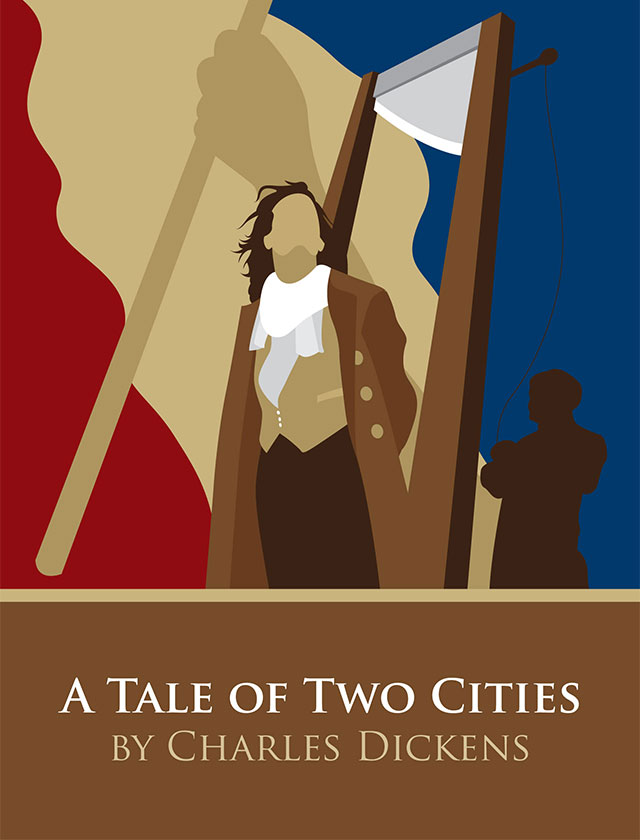A Tale of Two Cities
by Charles Dickens
Book 2, Chapter 1
At the beginning of book two, the reader learns that a significant period of time (five years) has passed since the conclusion of book one. It also features a shift in characters. Jerry Cruncher, who previously only appeared as a messenger, plays a central role in this chapter. The chapter features a scene in the Cruncher household in which Jerry is shown extremely angered by his wife’s praying. His son, also named Jerry, goes with Cruncher to his job, where the two of them wait outside of the bank until Cruncher is asked to deliver a message. The chapter contains hints about Cruncher’s nighttime employment, including the rust underneath his nails, his muddy boots, and his paranoia about his wife’s prayers, so that his son begins to question things about his father. It is clear that the elder Cruncher has a secret, and the reader is left to wonder about the nature of that secret.
One of the important features of this chapter is Dickens’s description of Tellson’s, even though it does not actually further the plot. Tellson’s serves as a tangible symbol of the higher socioeconomic class and how it helps control the lower class. First, its physical appearance belies the extreme wealth of the bank; vast amounts of wealth are stored in a decaying building. It is difficult to ignore the idea that that aristocracy, like Tellson’s, is also an old and decaying institution that keeps a vast amount of wealth. Dickens also makes it clear that Tellson’s plays an active role in allowing money to further class divisions, as it interacts with the government by reporting financial crimes, knowing that those defendants will likely be executed because of that. In fact, even Tellson’s physical location, which is next to the Temple Bar, where the heads of the executed are sometimes displayed, serves as a reminder of this symbiotic relationship between wealth, justice, and social class.
Sign up to continue reading Book 2, Chapter 1 >